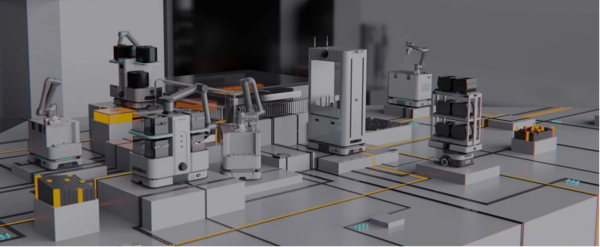© © 2022 Copyright © Youibot Robotics Co., Ltd. All rights reserved.SitemapPrivacy Policy
What we used to expect a robot can do for us are simple actions like moving, picking and cutting. But now, advanced algorithm has breathe a new life into robotics world.
Like humans, autonomous mobile robots are capable of independent decision-making and taking appropriate action.
A robot that is genuinely autonomous can observe its surroundings, make judgments based on what it sees and/or has been taught to identify, and afterward take actions or manipulate
in that environment.

Autonomous mobile robots are intelligent devices that can carry out activities and function in a given environment on their own, free from supervision or human involvement.
With this degree of autonomy, the workforce is able to assign hazardous, unpleasant, or boring jobs to the robot so that people can focus on fulfilling and meaningful work.
The AMR is capable of acting and making judgments depending on what it notices in its surroundings. It doesn't need assistance from an individual and can be left alone in a room to complete its task.
The AMR has a suite of sensors that let it sense its surroundings, make decisions about what to do relying on those perceptions and then actually do that thing.
When an AMR is fulfilling predetermined duties in the warehouse and detects the obstacles (like a pallet), it will bypass the obstacles and carry on without human intervention.
People's five senses are virtually exclusively responsible for perception. We perceive the outside environment with our biological systems such as eyes, ears, mouths, noses and skins.
Sensors are perception tools for an AMR. AMR robots may "see" and "perceive" their surroundings with the aid of laser scanners, vision-based cams, impact sensors, force-torque sensors, and even spectrophotometers as input devices.
The majority of human decisions are made by the brain, or occasionally by the "gut" .
Similar decision-making processes are used by autonomous mobile robots. A robot's "brain" is often a processor, and it makes decisions in line with its purpose and the data it gathers along the route.
However, AMRs also possess a feature similar to the neurological system of the human body. Their safety mechanisms can function independently of the processor, and react more quickly.
That’s how the autonomous mobile robot stop moving when somethings gets in its way or something goes wrong with it.
We've integrated vision and LiDAR technologies into every single one of our autonomous mobile robots.
They can transfer materials in the warehouse and function in any workshop of your factories, reducing cycle times and unproductive walking time for employees.
Please be free to contact us if you have inquiries about any of our products.
By continuing to use the site you agree to our privacy policy Terms and Conditions.